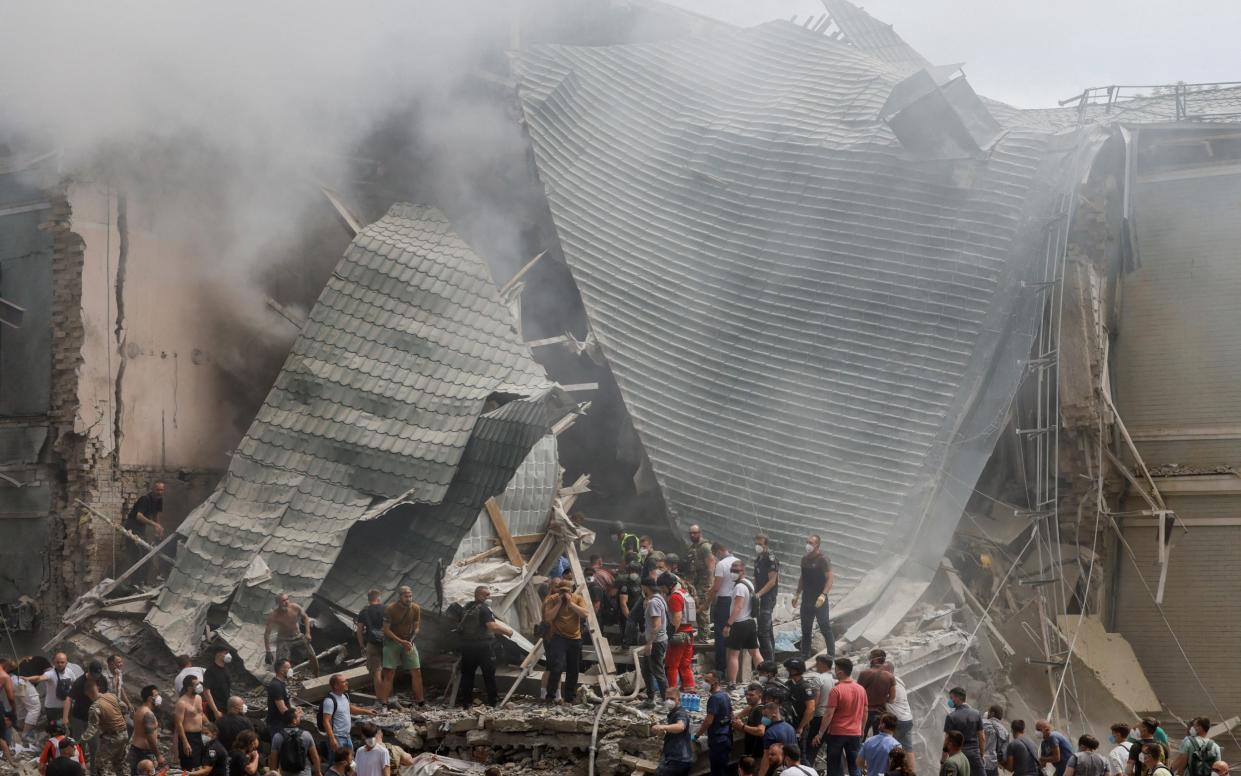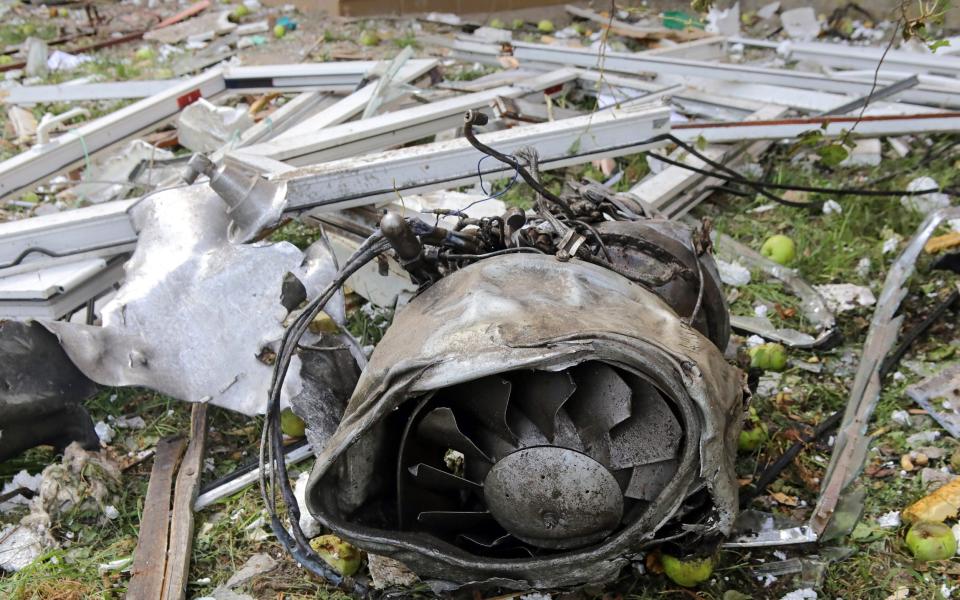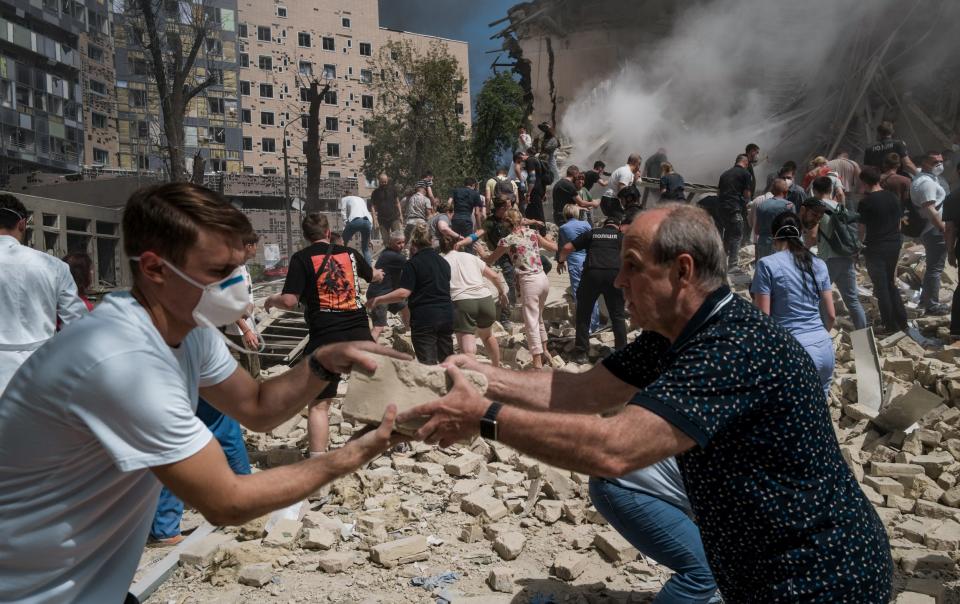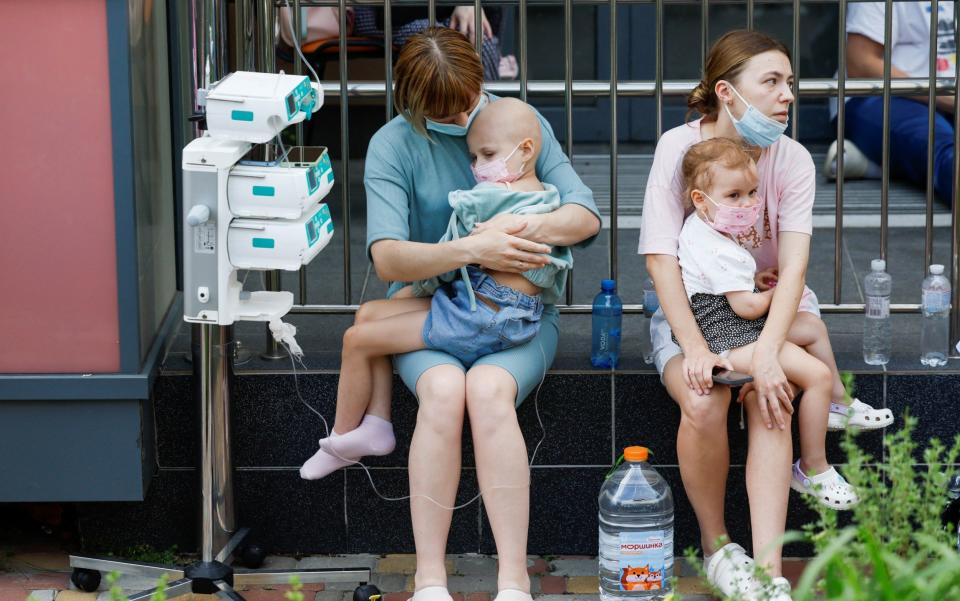Russian strike on children’s hospital used new tactics to avoid Ukraine’s defences

Russia deployed new tactics to help its missiles evade Ukrainian air-defences in the long-range barrage that destroyed a children’s hospital in Kyiv.
Col Yuriy Ihnat, a former spokesman for Ukraine’s air force, said the missiles flew at “extremely low” altitudes, making them harder to be detected and intercepted.
At least 31 people, including four children, were confirmed dead and 117 injured in the Russian missile strikes on Kyiv, according to local authorities.

A KH-101 cruise missile was captured on camera smashing into the Okhmatdyt Children’s hospital in the rare daytime attack on the Ukrainian capital on Monday morning.
More people were killed and injured in similar strikes across other Ukrainian cities.
“Unfortunately, the enemy is constantly improving not only reconnaissance and strike UAVs, but also other means of air attack – cruise and ballistic missiles,” Col Ihnat wrote in a social media post in the wake of the barrage.
“As a result, they are becoming harder to detect and destroy.”
Col Ihnat said that Russian missiles were being equipped with “additional features, including radar and heat traps”, as well as being flown as little as 165ft (50 metres) from the ground.
Western analysts said the low altitude meant that Ukrainian air-defence units on the ground would have had little time to respond to the missile threat after detection.

“Ukrainian air defences have historically had high shoot-down rates for certain types of cruise missiles, particularly the older Kh-101 variety,” the Institute for the Study of War wrote in its latest daily report on the conflict in Ukraine.
“But Ihnat’s suggestion of Russian forces launching cruise missile strikes at such low altitudes indicates that Russian forces may have innovated their tactics and/or technology somewhat to inflict maximum damage on Ukrainian infrastructure by giving Ukrainian air defence practically no time to respond until the missile is already within close range of the ground.”
Ukraine has deployed similar tactics, with its air force launching British Storm Shadow missiles to fly low to the terrain to make them harder to intercept.
Kyiv’s pilots often fly at low altitude to use the terrain below to cover their approach from Russian radars on the ground.
An assessment by the United Nations monitoring mission in Ukraine said that evidence from the scene had indicated a “high likelihood” of a direct hit from the Russian cruise missile.
Some 670 children and 1,000 staff members were at the hospital at the time of the attack.

Search and rescue efforts at the hospital site were called off on Tuesday morning, Ukraine’s interior minister said.
Ihor Klymenko said that two people, including a doctor, had been killed and 32 wounded in the strike.
At a Nato summit in Washington beginning late on Tuesday, Kyiv is expecting to be promised a number of US Patriot air-defence batteries.
Poland is also in talks with Ukraine over possibly offering to intercept Russian missiles in Ukrainian airspace that are launched in the direction of their shared border.
Meanwhile, Ukrainian forces struck a Russian military airfield, an energy substation and an oil depot in three separate Russian regions overnight.
The strikes were carried out by Ukraine’s SBU security service, according to a report by the Kyiv Independent, citing anonymous intelligence sources.


